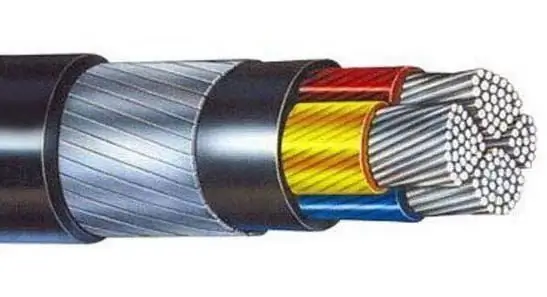2026 Author: Howard Calhoun | [email protected]. Last modified: 2025-01-24 13:10:41
JSC "Bogoslovsky Aluminum Plant" is one of the leading enterprises of the non-ferrous industry of the Russian Federation. Founded in 1940, it was one of the main aluminum producers in the country. Today, BAZ specializes in the production of alumina and components for powder metallurgy.

Enterprise to be
1940th. It's been a year since World War II has been going on. The troops of the Third Reich in a month and a half defeated one of the largest armies in Europe - the French, and are hatching plans for the occupation of Britain. It becomes obvious that the conflict with Germany cannot be avoided, the specter of the coming war is becoming more and more clearly visible.
Under these conditions, close attention is paid to the rearmament of the army. However, the USSR lagged far behind a potential adversary in the development of aviation. The time of plywood planes has passed, and aluminum was sorely lacking for the manufacture of modern fighters and bombers. In addition, other industries also needed this valuable metal.
The Council of People's Commissars and the Military Central Committee make a strategic decision to build a new large aluminum smelting enterprise. The location was chosen as a site in the very heart of the Urals, on its eastern slopes, near the Tura River. In the 1930s, deposits of bauxite rock, outstanding in terms of reserves, were discovered here, from which the valuable metal is obtained.

Labor feat
For the construction of the Bogoslovsky aluminum plant, it was decided to involve "class enemies" - people whom the authorities considered dangerous for the Soviet system. The BogoslovLAG was formed by the NKVD, where dispossessed peasants and ethnic Germans were brought, who had lived in Russia for centuries, but for some time now became objectionable to the authorities.
Because forced labor has low productivity, construction has been delayed. The prisoners worked to the point of exhaustion, in the most difficult weather and living conditions. According to official figures, one in five workers died at the construction site. Their memory is immortalized: a monument to the prisoners of the Gulag was erected on the banks of the Krasnoturyinsky reservoir. But the most important reminder of the labor feat was the Bogoslovsky aluminum plant itself and the city of Krasnoturinsk, which grew up around the giant plant.

Launch
With the beginning of the war, the facilities of three large aluminum enterprises were evacuated to the BAZ site: Dnepropetrovsk, Volkhov and Tikhvin. However, for the reasons described above, the equipment was idle. Also the reason for the delayconstruction there was an acute shortage of metal structures. After the loss of Donbass, there were not so many metallurgical enterprises left, and their products were primarily sent to arms factories.
In 1943, some production facilities were commissioned, a dam was erected on the Turya River. On June 17, 1943, the first ton of products was obtained from local alumina - aluminum hydroxide, used for cleaning liquids and in medicine. The first alumina (from which the metal is subsequently obtained) was obtained on 1944-17-04.
With incredible efforts by 1945, the Bogoslovsky aluminum plant was built. Its launch was timed to coincide with Victory Day. On May 9, 1945, the first aluminum was officially smelted at the enterprise. Over time, a working settlement arose around the industrial site, which received the name Krasnoturinsk.

Rearmament
The old equipment inherited from the evacuated factories was very worn out. After the war, it began to be replaced by more productive machines and units. And it gave results. In 1948, the volume of output (mainly aluminum and alumina) increased 4.5-5 times.
In 1949-1953, the expansion and reconstruction of the Bogoslovsky aluminum plant continued. Contacts maintained with consumers made it possible to optimize the assortment, introduce new grades of metals and powders into production. Thanks to the introduction of new electrolysis facilities in 1953, aluminum production doubled. The construction of the alumina shop No. 2 began in 1959year.

70s-80s
It is quite natural that modernization and expansion of capacities is a continuous process for such a large plant. In the 70s, a large-scale reconstruction began. At the same time, the Bogoslovsky aluminum smelter mastered the innovative technology of "Bayer-sintering" of alumina, which is still used today. The production of aluminum protectors for the protection of metal structures, catalysts for oil workers has begun, and new alloys have been mastered.
Many BAZ employees subsequently held high government positions. For example, I. V. Prokopov became Deputy Minister of Non-Ferrous Metallurgy, Yu.
Problems
By the beginning of the 80s, many problems had accumulated at the enterprise. On the one hand, there is a large wear of the main equipment, on the other hand, the characteristics of bauxite ore have deteriorated. As a result, the quality of products and the profitability of production fell. The volume of aluminum produced has been steadily declining. The plant was in decline, staff turnover increased.
In 1987 BAZ was headed by A. V. Sysoev. The new administration "turned to face the people." A new social policy was developed, and the production culture was raised. Professionals began to return to the plant. This quickly paid off - productivity increased, the production of both metal and alumina increased. Improved financial performance. The backlog allowed us to relatively painlessly enter the difficult perestroika period.
26.10.20092009, an emergency occurred at the BAZ: four roof trusses and 6 roof slabs collapsed at site No. 2 of alumina production.

New time
After corporatization in 1992, the Bogoslovsky Aluminum Plant (TIN 6612005052/661201001) took under its wing more than 20 large and small companies of the city and region. Due to the diversification of the company has developed quite steadily. In total, the OJSC produced about 30 types of products, among them:
- primary aluminum (more than 180,000 tons);
- alumina (over 1 million tons);
- alloys;
- metallized powders and powders;
- building materials;
- TNP and others.
Since 2013, aluminum smelting has been suspended, and capacities have been mothballed. At the same time, the enterprise remains one of the main suppliers of alumina for other manufacturers. An important area is powder metallurgy.
In 2016, the second stage of the sludge field was launched. This will allow uninterrupted production of alumina at the current production rates for the next 20 years. The method of extracting rare earth materials and aluminum from waste sludge, recently introduced at the enterprise, is innovative.
Contacts
Address of the Bogoslovsky aluminum smelter: 624440, Russian Federation, Sverdlovsk region, city of Krasnoturinsk, K. Marx street, 1.
In 2007, BAZ became part of the united company Rusal. Since 2011, the head of the plant is V. V. Kazachkov. More information and contact numbersThe Bogoslovsky aluminum smelter is listed on the official website of OK Rusal.
Recommended:
Aviation aluminum: characteristics

Aircraft aluminum accounts for about 75-80% of the total mass of a modern aircraft. And its first use in aviation was recorded even before the invention of the aircraft themselves. For example, Count Ferdinand Zeppelin made frames from aluminum alloy for his famous airships
Aluminum self-adhesive tape: properties, types, characteristics

Aluminum self-adhesive tape is a universal material for technical purposes, which is used both in everyday life and in construction
Aluminum cable: description, types, characteristics

Currently, people are very actively using wires, cables, etc. The main purpose of these elements has become the transmission of electricity. In everyday life, aluminum cables are the most common type of steel
Corrosion of aluminum and its alloys. Methods for combating and protecting aluminum from corrosion

Aluminium, unlike iron and steel, is quite resistant to corrosion. This metal is protected from rust by a dense oxide film formed on its surface. However, in the case of destruction of the latter, the chemical activity of aluminum greatly increases
Joint-stock company (JSC) is Charter of JSC. JSC property

A joint-stock company (JSC) is an enterprise whose authorized capital is divided into a certain number of shares. Each of these parts is presented in the form of a security (share). Shareholders (participants of a joint-stock company) should not be liable for the obligations of the enterprise. At the same time, they may incur the risk of losses within the limits of the value of the shares they own

